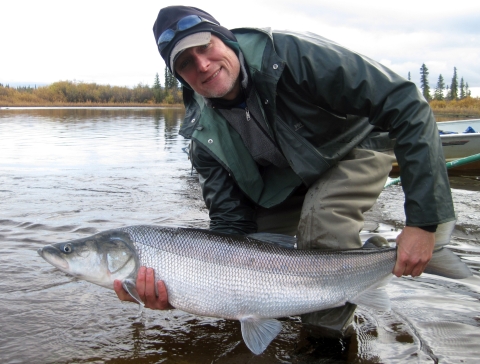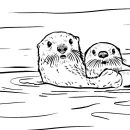Birds are sensitive during the nesting season. Vegetation clearing, ground disturbance, heavy wake near shorelines and other site construction and recreational activities can destroy eggs or nestlings or cause nest abandonment. If you encounter an active nest, leave it be and give it space until young hatch and depart the area. Do not destroy eggs, chicks, or adults of wild bird species. Learn about the laws that govern migratory birds in Alaska including possible exceptions for subsistence gathering. More information on avoiding waterbird harassment and timing recommendations for construction activities to minimize impacts to nesting birds.
Visit Us
In northwest Alaska, we are fortunate to have vast wild landscapes at our doorstep to enjoy throughout the year. Whether you call it "connecting with nature" or simply "going to camp," the possibilities for outdoor activities on Selawik Refuge are many. We do not offer regularly scheduled programs or presentations, nor do we have developed recreational facilities. Most public use on the Selawik Refuge is in the form of subsistence activities by local, predominantly Iñupiaq residents. For those from outside the region, visiting the Selawik Refuge can require considerable time, effort, and expense, but rich rewards can be found in the scenery, wildlife, and wilderness character of the area. Hunting, fishing, camping, and wildlife viewing are some of the more common uses of the refuge.
Location and Contact Information
Our Species
Selawik Refuge is home to a hardy array of resident and migratory mammals, waterfowl, songbirds, shorebirds, and fishes. The refuge includes diverse habitats, and various wildlife species use the available boreal forests, wetlands, open grass and sedge meadows, and Arctic tundra.
Selawik Refuge is important migratory and wintering habitat for the Western Arctic Caribou Herd, one of four herds found across Arctic Alaska. Learn more about this herd from the Western Arctic Caribou Herd Working Group.
The Selawik River watershed and the Kobuk River delta are both fish-rich aquatic environments. Both are home to multiple species of whitefish, Northern pike, and burbot. The upper Selawik River is one of two spawning areas in the region for sheefish, known by some as sii or inconnu. Salmon, primarily chum salmon, are found in the Kobuk River, but not in the Selawik.
Projects and Research
In Selawik Refuge, natural forces continue to shape the land and wildlife as they have for centuries. Our region is blessed with mostly abundant resources, and the human population remains low. As a result, much of the work we do consists of monitoring fish and wildlife populations and environmental indicators, particularly in light of the climate change climate change
Climate change includes both global warming driven by human-induced emissions of greenhouse gases and the resulting large-scale shifts in weather patterns. Though there have been previous periods of climatic change, since the mid-20th century humans have had an unprecedented impact on Earth's climate system and caused change on a global scale.
Learn more about climate change currently occurring in the Arctic. We also work to share knowledge and build relationships among people who use and value the region's resources.

